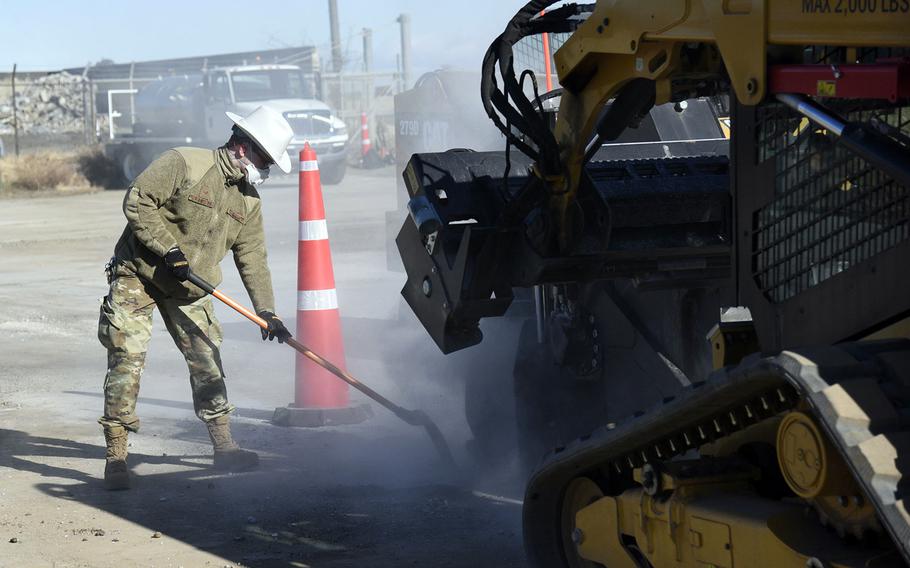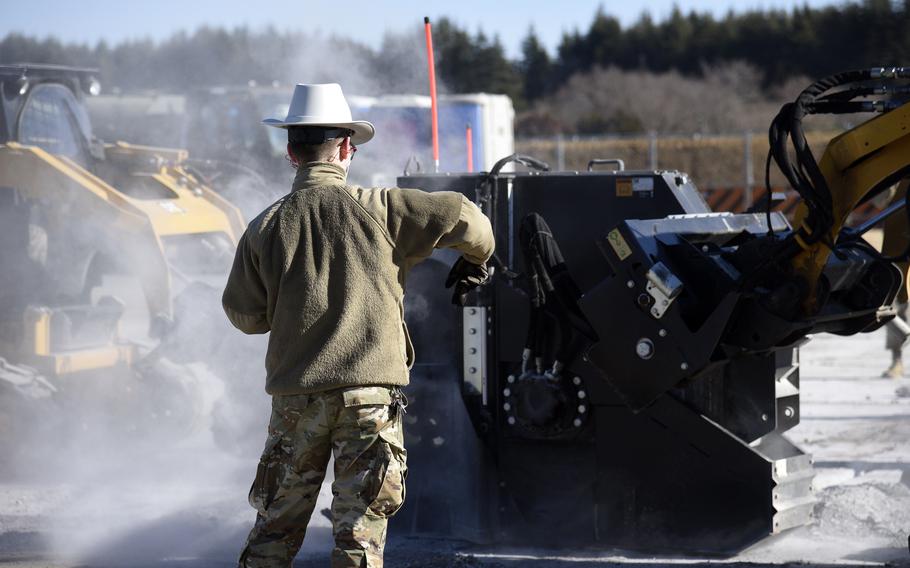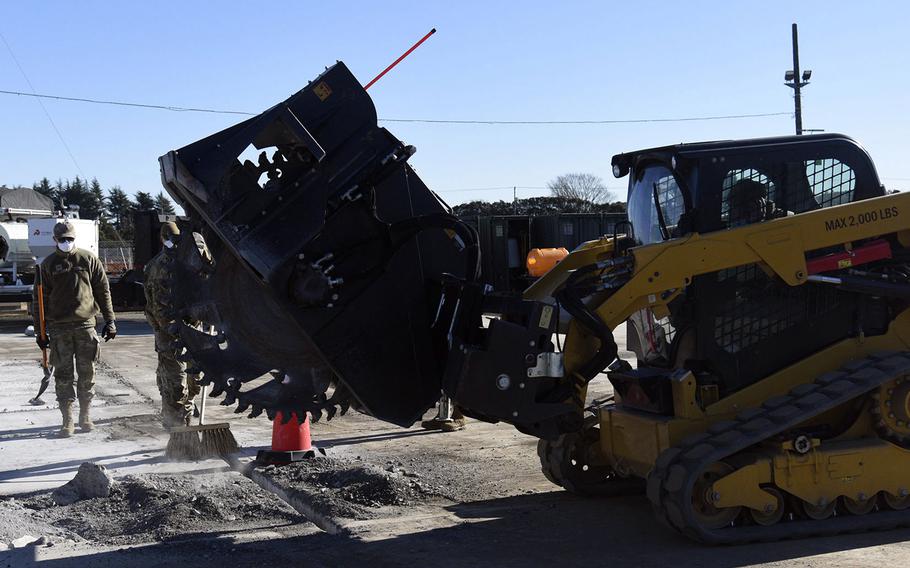
Air Force Staff Sgt. Lukasz Krawcyzk uses a shovel to remove excess debris from the path of a wheel saw during a runway repair exercise at Yokota Air Base, Japan, Feb. 6, 2025. (Jeremy Stillwagner/Stars and Stripes)
YOKOTA AIR BASE, Japan — More engineers trained to cut and pour concrete would make the Air Force’s Indo-Pacific bases more resilient, according to an expert in rapid airfield repair.
Members of the 374th Civil Engineer Squadron — known as the “Dirt Boyz” — practiced quickly repairing concrete as they would a damaged runway Thursday morning at the home of U.S. Forces Japan in western Tokyo.
A team of 22 airmen can repair 18 craters in six hours — the sort of effort that might be needed to create a strip allowing planes to take off after an attack — a member of the squadron, Tech Sgt. Ryan O’Keefe, said while keeping watch over the drill.
Potential adversaries in the region such as China and North Korea have potent missile forces that experts say are zeroed in on U.S. bases in Japan.
There’s nothing that can be done to make concrete runways better able to withstand an enemy missile strike, O’Keefe said.

Staff Sgt. Lukasz Krawcyzk acts as a ground guide while wheel saws are used to remove a patch of damaged concrete during a runway repair drill at Yokota Air Base, Japan, Feb. 6, 2025. (Jeremy Stillwagner/Stars and Stripes)
“The best way to make the runway more resilient is to have more Dirt Boyz there to fix it,” he said, without specifying how many are already at Yokota.
In a 14-year career, O’Keefe has filled plenty of craters but one of his most memorable jobs involved repairing degraded concrete next to the passenger terminal at Erbil, Iraq, in 2020.
Successful attacks on U.S. airfields have been few and far between in recent years.
However, a team of engineers from the Air Force’s 1st Expeditionary Civil Engineer Group repaired a runway at Qayara Airfield West, Iraq, under hostile fire in 2016. The runway was damaged by Islamic State extremists who occupied the facility for two years.
During Thursday’s practice, the engineers performed a choreographed routine to repair two holes, dug the previous day with jackhammers attached to excavators, in a parking lot not far from Yokota’s runway.
Rapid airfield damage repair allows engineers to quickly fill large numbers of small craters caused by an enemy attack.

Airmen with the 374th Civil Engineer Squadron prepare to cut out a damaged section of concrete during a runway repair drill at Yokota Air Base, Japan, Feb. 6, 2025. (Jeremy Stillwagner/Stars and Stripes)
It starts with airmen cleaning the area around a crater and surveying it before machines with massive rotating blades move in to cut a square around the damaged area.
Next, a giant concrete breaker smashes up the material that is to be removed. An excavator lifts out the debris before the hole is filled with quick-set concrete.
A heavy equipment operator involved in the Yokota training, Senior Airman Kody Kross, said the time it takes to repair damage depends on the size of a crater but added: “The concrete sets in a couple of hours.”
Kross estimates he’s trained on rapid airfield repair every two weeks and helped fix 100 simulated craters.
“If everything goes smoothly it usually takes one to two hours,” he said.
The rapid repair process works with craters under 20 feet in diameter, O’Keefe said.
For larger craters, the engineers use a bulldozer to fill the hole, then cover the surface with fiberglass reinforced matting, he said.